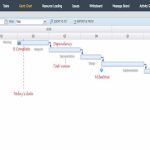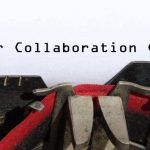Task management is as integral to the project management discipline as a ball to the game of football. Without task management software, there is no project management software.
For this reason, task management software is the primary foundation of any project management application. In other words, there could not be good project management software without very good task management software as an integral part of it.
Task management is the tool for creating and managing tasks through the project’s lifecycle. It includes gathering requirements, planning, status tracking, testing, and creating final reports when tasks are completed.
Individuals use task management tools like a pen and a pad or software tools to organize and accomplish personal goals for every day’s chores.
Teams rely on task management software to collaborate and achieve group goals together. Tasks could have status, start date, due date, people who are assigned to work on them, comments, tags, and files that are attached to them.
More advanced task management systems support dependencies, recurrence, priority, and complexity.
The market is saturated with to-do lists and task management tools of varying maturity and functionality.
The hope of this tutorial is to educate the reader about the attributes of good task management software.
We also aim to clarify terms used by project management practitioners when task management is discussed or planned.
There are three levels of task management software, each targeting different project complexities, team experience, team structure, and team sizes.
I have grouped these task management tools as beginners, Intermediate, and advanced. For each, the required attributes and functionality are listed and explained.
Beginners Task management software
When managing tasks for personal use or simple projects all the functionality provided by the advanced task manager is not needed.
Here we have listed the minimum functionality needed to complete basic personal or simple projects.
- Title: A task should have a title; this helps to state the reason for the task in one simple sentence.
- Description: Task description is used when the task title is not enough and more information should be given to the person the task is assigned, to make things clear.
- Start date: When the task starts
- Due date: When the task ends
- Assigned to: Individual who is responsible for completing this task
- That is all needed for a simple task manager to provide. Most to-do lists have this level of functionality. Quite a lot could be accomplished even with is simple task management system. An example if simple project management is Asana.
Intermediate task management software
For more advanced projects when a few people work together, the task manager needs to provide more functionality and features than listed above to be effective. In addition to all features listed above, this type of task manager needs to provide the following:
- Recurrence: In many projects, a task is repeated daily, weekly, or monthly. A recurring task helps to simplify this by creating the task once and using it as many times as needed.
- File attachment: To support task description or files needed to accomplish or verify the task, the task manager should have a facility for attaching files to tasks. The incorporation of third-party file storage systems like Google Drive and DropBox is a big plus.
- Status: The clear showing of a task’s status is very important and can trigger action by the project manager or the team as a whole. A task could have one of the following states:
- Backlogged
- Open task
- Assigned
- Worked on
- Late
- On-time
- Completed
- Failed
- Forwarded
- Tagging: A good task manager provides tagging to label tasks for easier search and grouping.
- Search: A good task manager provide a search by different attributes like assigned to, status, and tags.
- Percentage completed: This provides a tool for the person working on the task to tell the rest of the team what percentage of the task is completed at any given time.
- Comments: During the task’s life cycle questions may arise. The system should be able to provide the ability for the team members to add comments on tasks for effective collaboration.
Most online project managers available today provide this level of functionality. This is good enough for most projects which don’t need the advanced features we will discuss in the next section.
An example of intermediate project management is Trello
Advanced task management software
Complex projects, especially those involving the collaboration of multi-disciplined groups like software engineering, hardware engineering, etc, need more advanced project management tools than the previous two types mentioned above.
These projects need robust applications which can manage tasks’ journey from inception to completion.
In addition to the features mentioned in the above two paragraphs, advanced task management applications have the following elements:
- Dependencies: In complex projects, we could have tasks that can’t start before another task is completed. Or a task can’t start unless another task has already started. These requirements are called dependencies or predecessors. The task that controls when another task can start is called the predecessor. There are four types of dependencies used in project management and by far the Finish to Start is the most widely used.
- Finish to Start- Task A can’t start before Task B is finished
- Finish to Finish- Task A can’t finish until Task B is finished
- Start to Start- Task A can’t start unless Task B has started
- Start to Finish- Task B can’t finish unless Task A has started
- Priority: Each task has a priority level from low to high. The project managers set the priority when the task is assigned.
- Complexity: This is for grouping tasks from simple to very complex. This helps the project team pay extra attention to tasks that are harder to accomplish.
- Bug Tracking: Advance task management systems have a facility for entering bugs during testing. Tasks could be linked to bugs related to them
- Gantt chart: Even though the Gantt chart was developed in the 1950s, it is still the best method for visualizing tasks in one graph. Advanced Gantt charts let the user manipulate task data right from the Gantt.
- Burn-down chart: The Burn-down chart is another visualization tool for comparing the project plan against the project’s actual progress. It shows if tasks are on time as planned or late. It also predicts the estimated project finish date based on the project’s own up to now data.
Advanced project management software is used for simple to multidisciplinary projects which need advanced task management plus tracking tools needed to run projects productively. Binfire, Wrike, and Clarizen are examples of project management software with advanced task management tools.
The market is filled with task management software vendors who claim to have the tools you need to be productive and complete your projects successfully. Notice that, not all teams are created equal. Make sure to try for yourself all tools available and choose the application that fits your needs best.
Refer to the buyer’s guide for purchasing project management software for a complete step-by-step guide on how to select software for project management. This guide specifies the requirements of task management software as part of a good project management application.
Good references for task management, project management, and tools needed for best practices can be found here:




This is the best task tutorial I have read! Well done
This is the best task tutorial I have read! Well done
This is the best task tutorial I have read! Well done
This is the best task tutorial I have read! Well done
This is the best task tutorial I have read! Well done
Pingback: Introduction to Gantt chart software - A Tutorial - Collaboration Corner
Pingback: Introduction to Gantt chart software - A Tutorial - Collaboration Corner
Pingback: Introduction to Gantt chart software - A Tutorial - Collaboration Corner
Pingback: Introduction to Gantt chart software - A Tutorial - Collaboration Corner
Pingback: Introduction to Gantt chart software - A Tutorial - Collaboration Corner
Pingback: Work management software - A tutorial - Collaboration Corner
Pingback: Work management software - A tutorial - Collaboration Corner
Pingback: Work management software - A tutorial - Collaboration Corner
Pingback: Work management software - A tutorial - Collaboration Corner
Pingback: Work management software - A tutorial - Collaboration Corner
Pingback: Tasks & Milestone revisited- updated 2017 - Collaboration Corner
Pingback: Tasks & Milestone revisited- updated 2017 - Collaboration Corner
Pingback: Tasks & Milestone revisited- updated 2017 - Collaboration Corner
Pingback: Tasks & Milestone revisited- updated 2017 - Collaboration Corner
Pingback: Tasks & Milestone revisited- updated 2017 - Collaboration Corner
Pingback: Gantt Chart- A quick guide updated 2017 - Collaboration Corner
Pingback: Gantt Chart- A quick guide updated 2017 - Collaboration Corner
Pingback: Gantt Chart- A quick guide updated 2017 - Collaboration Corner
Pingback: Gantt Chart- A quick guide updated 2017 - Collaboration Corner
Pingback: Gantt Chart- A quick guide updated 2017 - Collaboration Corner
Pingback: Gantt Chart- A quick guide updated 2017 - Collaboration Corner
Pingback: Project Management Workflow in Binfire - Collaboration Corner
Pingback: Project Management Workflow in Binfire - Collaboration Corner
Pingback: Project Management Workflow in Binfire - Collaboration Corner
Pingback: Project Management Workflow in Binfire - Collaboration Corner
Pingback: Project Management Workflow in Binfire - Collaboration Corner
Pingback: Project Management Workflow in Binfire - Collaboration Corner
Pingback: How to manage tasks at work - Collaboration Corner
Pingback: How to manage tasks at work - Collaboration Corner
Pingback: How to manage tasks at work - Collaboration Corner
Pingback: How to manage tasks at work - Collaboration Corner
Pingback: How to manage tasks at work - Collaboration Corner
Pingback: How to manage tasks at work - Collaboration Corner
Great read. Although I disagree on the beginner, intermediate, advanced scaling of software some features here are laid out correctly. Our main focus on project management relies on getting things done. We usually don't want to spend so much time on learning new software and want something in the "beginner level" to provide enterprise features. I've recently come across to Hitask and recommend you to check it out to get a different point of view. Have a good one.
Great read. Although I disagree on the beginner, intermediate, advanced scaling of software some features here are laid out correctly. Our main focus on project management relies on getting things done. We usually don't want to spend so much time on learning new software and want something in the "beginner level" to provide enterprise features. I've recently come across to Hitask and recommend you to check it out to get a different point of view. Have a good one.
Great read. Although I disagree on the beginner, intermediate, advanced scaling of software some features here are laid out correctly. Our main focus on project management relies on getting things done. We usually don't want to spend so much time on learning new software and want something in the "beginner level" to provide enterprise features. I've recently come across to Hitask and recommend you to check it out to get a different point of view. Have a good one.
Great read. Although I disagree on the beginner, intermediate, advanced scaling of software some features here are laid out correctly. Our main focus on project management relies on getting things done. We usually don't want to spend so much time on learning new software and want something in the "beginner level" to provide enterprise features. I've recently come across to Hitask and recommend you to check it out to get a different point of view. Have a good one.
Great read. Although I disagree on the beginner, intermediate, advanced scaling of software some features here are laid out correctly. Our main focus on project management relies on getting things done. We usually don't want to spend so much time on learning new software and want something in the "beginner level" to provide enterprise features. I've recently come across to Hitask and recommend you to check it out to get a different point of view. Have a good one.
Great read. Although I disagree on the beginner, intermediate, advanced scaling of software some features here are laid out correctly. Our main focus on project management relies on getting things done. We usually don't want to spend so much time on learning new software and want something in the "beginner level" to provide enterprise features. I've recently come across to Hitask and recommend you to check it out to get a different point of view. Have a good one.
Pingback: Task and milestone explained! - Collaboration Corner
Pingback: Task and milestone explained! - Collaboration Corner
Pingback: Task and milestone explained! - Collaboration Corner
Pingback: Task and milestone explained! - Collaboration Corner
Pingback: Task and milestone explained! - Collaboration Corner
Pingback: Task and milestone explained! - Collaboration Corner
Pingback: Free plan for startups - Collaboration Corner
Pingback: Free plan for startups - Collaboration Corner
Pingback: Free plan for startups - Collaboration Corner
Pingback: Free plan for startups - Collaboration Corner
Pingback: Free plan for startups - Collaboration Corner
Pingback: Free plan for startups - Collaboration Corner
Pingback: Free plan for nonprofits - Collaboration Corner
Pingback: Free plan for nonprofits - Collaboration Corner
Pingback: Free plan for nonprofits - Collaboration Corner
Pingback: Free plan for nonprofits - Collaboration Corner
Pingback: Free plan for nonprofits - Collaboration Corner
Pingback: Free plan for nonprofits - Collaboration Corner
Pingback: To do list or task management, which one is right for you?
Pingback: To do list or task management, which one is right for you?
Pingback: To do list or task management, which one is right for you?
Pingback: To do list or task management, which one is right for you?
Pingback: To do list or task management, which one is right for you?
Pingback: To do list or task management, which one is right for you?
Pingback: Project Management Software ROI - Collaboration Corner
Pingback: Project Management Software ROI - Collaboration Corner
Pingback: Project Management Software ROI - Collaboration Corner
Pingback: Project Management Software ROI - Collaboration Corner
Pingback: Project Management Software ROI - Collaboration Corner
Pingback: Project Management Software ROI - Collaboration Corner
Pingback: Project tracking guide - Collaboration Corner
Pingback: Project tracking guide - Collaboration Corner
Pingback: Project tracking guide - Collaboration Corner
Pingback: Project tracking guide - Collaboration Corner
Pingback: Project tracking guide - Collaboration Corner
Pingback: Project tracking guide - Collaboration Corner
Pingback: Binfire - the best Asana alternative - Collaboration Corner
Pingback: Binfire - the best Asana alternative - Collaboration Corner
Pingback: Binfire - the best Asana alternative - Collaboration Corner
Pingback: Binfire - the best Asana alternative - Collaboration Corner
Pingback: Binfire - the best Asana alternative - Collaboration Corner
Pingback: Binfire - the best Asana alternative - Collaboration Corner
Pingback: Agile project management software guide - Collaboration Corner
Pingback: Agile project management software guide - Collaboration Corner
Pingback: Agile project management software guide - Collaboration Corner
Pingback: Agile project management software guide - Collaboration Corner
Pingback: Agile project management software guide - Collaboration Corner
Pingback: Agile project management software guide - Collaboration Corner